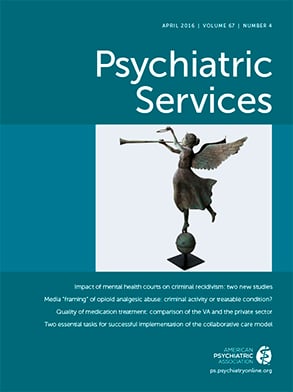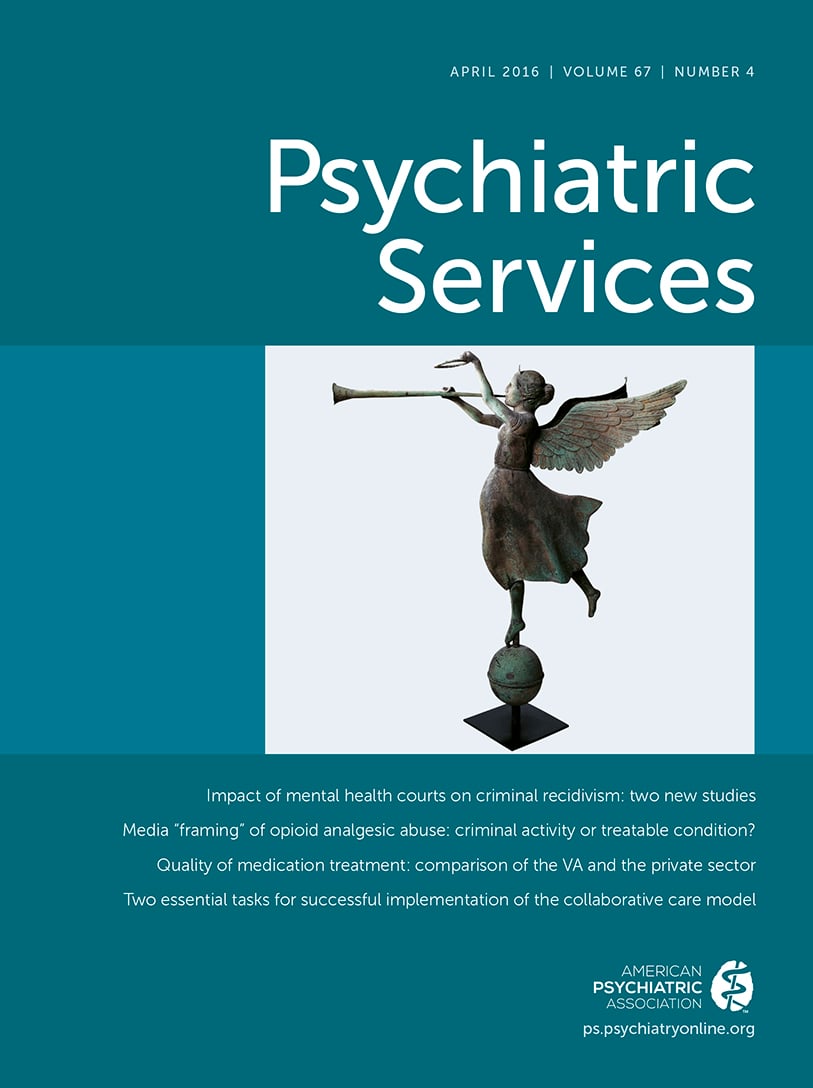In 2006, the United Nations (UN) General Assembly adopted the Convention on the Rights of Persons with Disabilities, culminating a multiyear effort to develop “a comprehensive and integral international convention to promote and protect the rights and dignity of persons with disabilities” (
1). It has since been ratified by 160 countries (not including the United States) and the European Union (
2). Although exemplary in many respects, the convention contains provisions that threaten to disrupt long-standing approaches to mental health law, including civil commitment and guardianship; interfere with efforts to protect people with severe cognitive and emotional impairments; and leave many people with disabilities worse off than before.
The Convention and Its Implementation
Countries that ratify the convention promise to “undertake to ensure and promote the full realization of all human rights and fundamental freedoms for all persons with disabilities without discrimination of any kind on the basis of disability” (
3). Its various articles guarantee rights to accessibility, education, health, privacy, and other conditions essential to full participation in modern society. The convention was inspired, in part, by the Americans with Disabilities Act, signed into law in the United States in 1990. But its provisions go well beyond that law, guaranteeing not merely freedom from discrimination but access to a range of supportive services. In parts of the world where people with disabilities are routinely subjected to neglect and abuse, the convention, if implemented faithfully, embodies hope for a vast improvement in the conditions of life.
Among the provisions of the convention are several that define the relationship between people with disabilities and the legal system. Article 12, which guarantees equal recognition before the law, requires ratifying states to “recognize that persons with disabilities enjoy legal capacity on an equal basis with others in all aspects of life.” Article 14 posits that “the existence of a disability shall in no case justify a deprivation of liberty.” And Article 5 affirms that all persons “are entitled without any discrimination to the equal protection and equal benefit of the law.” These provisions have been the focus of much of the current concern about the implications of the convention.
To oversee implementation of the convention, the document established a Committee on the Rights of Persons with Disabilities. Its 18 members are each nominated by a ratifying state and elected for four-year terms. Countries that have ratified the convention are obligated to report on their implementation efforts within two years, with updates every four years thereafter. The committee reviews the reports and determines whether states are in compliance or identifies steps that need to be taken to conform to the terms of the convention. In its biannual reports, the committee is empowered to make recommendations to the UN General Assembly that would facilitate implementation.
General Comment No. 1
Eight years after adoption of the convention, the committee issued its first interpretation, focusing in particular on Article 12, especially the section on legal capacity (
4). “Article 12 of the Convention,” the committee wrote, “affirms that all persons with disabilities have full legal capacity . . . [and] makes it clear that ‘unsoundedness [sic] of mind’ and other discriminatory labels are not legitimate reasons for the denial of legal capacity.” Holding that “legal capacity is a universal attribute inherent in all persons by virtue of their humanity,” the committee concluded that there are no circumstances under which people can be deprived on the basis of a disability of the right to make decisions for themselves. Offers to support a disabled person’s decision making are regarded as legitimate as long as the person retains the power to decline such support and the person’s decision is determinative. In rare situations in which a person is unable to state a decision (for example, if the person is comatose), efforts should be made to ascertain the person’s will and preferences and to make decisions accordingly.
In the comment, the committee underscored the implications of its interpretation. Although Anglo-American law has recognized since medieval times the need to appoint guardians for persons who lack capacity to protect their own interests—and most other legal systems have similar provisions—the committee argued that the convention requires elimination of all guardianship or conservatorship regimes. Imposing a guardian because of a person’s disability constitutes discrimination on the basis of disability, the committee said, which is precluded by the convention. Under this interpretation, family members could not protect loved ones with dementia by managing their assets on their behalf or placing them in appropriate assisted living or nursing facilities. Nor could they step in to stop persons in the manic phase of bipolar disorder from dissipating the savings accumulated over a lifetime, rendering themselves and their families penurious.
Moreover, the committee’s conclusion that parties to the convention “have an obligation not to permit substitute decision-makers to provide consent on behalf of persons with disabilities” applies to medical treatment as well. “[F]orced treatment by psychiatric and other health and medical professionals is a violation of the right to equal recognition before the law” protected by Article 12; therefore, signatories “must abolish policies and legislative provisions that allow or perpetrate forced treatment . . . an ongoing violation found in mental health laws across the globe.” The decisions of all patients able to say “no,” for example, to life-saving treatment for pneumonia—although demented, delirious, or psychotic—would have to be respected.
The committee’s view on involuntary commitment of people with mental disorders is similar. Detention of persons on the basis of mental disabilities without their consent “constitutes arbitrary deprivation of liberty and violates Articles 12 and 14.” Even if commitment requires additional findings of dangerousness to self or others or need for care and treatment, insofar as it rests in part on the presence of a mental disorder, it is precluded. That this is not just the view of a renegade committee can be seen in the report of the UN High Commissioner for Human Rights, who confirmed that the convention requires removal of all laws “authorizing the preventive detention of persons with disabilities on grounds such as the likelihood of them posing a danger to themselves or others, in all cases in which such grounds of care, treatment and public security are linked in legislation to an apparent or diagnosed mental illness” (
5).
One additional implication for mental health law is worth noting. The High Commissioner also concluded that Article 14, which says that disability cannot justify deprivation of liberty, “requires abolishing a defence based on the negation of criminal responsibility because of the existence of a mental or intellectual disability” (
5). Thus the insanity defense (and presumably findings that a defendant is incompetent to stand trial) constitutes discrimination on the basis of disability and must be eliminated. That this would lead to the conviction and imprisonment of defendants with severe mental illnesses who would not previously have been held responsible for their actions goes unmentioned.
Reaction to the Convention and Its Interpretation
Responses to the convention and to the committee’s interpretation of its implications for mental health law have varied from enthusiastic embrace by some advocates to condemnation by many mental health professionals. The reaction in the United States has been muted by the Senate’s failure in 2012 to ratify the document. However, commentators in Europe and the rest of the world, most of which is party to the convention, have grappled with how to apply the rules it embodies.
One approach has been to reject the committee’s interpretation as a misreading of the convention, a tactic abetted by the convention’s loosely drafted language and the contradictions among its various provisions. Thus Article 12, which holds legal capacity to be inviolable and on which a good deal of the committee’s analysis rests, also contains a provision that appears to recognize that capacity sometimes can be limited (
6). Another strategy has been to point to conflicts between the rights emphasized by the committee, such as legal capacity, and other rights embodied in the convention, including enjoyment of the highest attainable standard of health, preservation of life, and freedom from stigma and discrimination. If the right to legal capacity can be purchased only at the cost of serious physical or mental harm, this argument suggests, the right to life should trump other considerations (
7).
A more conceptual attack on the committee’s interpretation targets its assumption that all legal determinations grounded in a person’s disability are inherently discriminatory. As Dawson (
6) notes, at times failure to take a person’s disability into account may be discriminatory. Indeed, the convention’s requirements for accommodation of disabilities and provision of supportive services mandate that distinctions be made between persons with and without disabilities. Moreover, one plausible view of discrimination is that it involves distinguishing among persons on the basis of factors unrelated to the issue at hand—for example, failing to hire a capable worker because of race. When distinctions are based on relevant factors, however, such as cognitive capacity for decisions about financial management or delusions concerning medical treatment, discrimination has not occurred.
A problem with arguments challenging the committee’s approach to the convention is evidence suggesting that its interpretation is precisely what was intended by the drafters. The drafting process involved active participation by groups representing people with disabilities, including the World Network of Users and Survivors of Psychiatry, which played a major role in shaping the provisions related to involuntary commitment and treatment (
8). In the absence of substantial input from general medical and mental health professionals, policy makers, and less radical advocacy organizations, the “survivor” perspective carried the day, with the results described above. If the intent of the drafters determines the interpretation of a document—a controversial proposition in U.S. constitutional law—their intent seems clear. Thus it is not surprising to see scholars accepting that the convention requires substantial changes in mental health law—although not all authors agree on the alterations required (
9,
10).
Lessons to Be Learned
How the controversy over the convention will play out is uncertain. A number of governments that ratified the document expressed specific reservations with regard to the provisions regarding legal capacity and may not feel themselves bound to their terms (
6). Others, recognizing the impracticality of abolishing provisions for guardianship, substitute medical decision making, and civil commitment, have simply declared themselves to be in compliance with the convention, although they manifestly are not (
6). Here in the United States, where ratification ran afoul of concern over intrusions on American sovereignty and got caught up in abortion politics, the convention has largely been ignored.
But there are lessons to be learned from the process surrounding the Convention on the Rights of Persons with Disabilities, whatever the ultimate outcome. For the medical and mental health professions, abstention from involvement in the development of international agreements, although the process may be time-consuming and painful, is unwise. A great deal of effort is now being spent internationally trying to undo the potential effects of a document that could have been drafted in a more balanced fashion. A similar conclusion applies to the governments involved in the process. By nominating representatives with extreme agendas and failing to pay close attention to the implications of the resulting documents, authorities in countries around the world share responsibility for the outcome.
Perhaps the most important conclusion should be drawn by the broader disability and mental health advocacy communities. They allowed the most radical elements in their community to take the lead in shaping what should have been a foundational consensus document for their constituencies. The result has been to distract attention from the positive changes that the convention could make for the rights of persons with disabilities, with governments and other stakeholders focused on controlling damage from a process gone astray. In the end, whether or not the provisions of the convention are implemented, people with disabilities around the world will pay the price.

